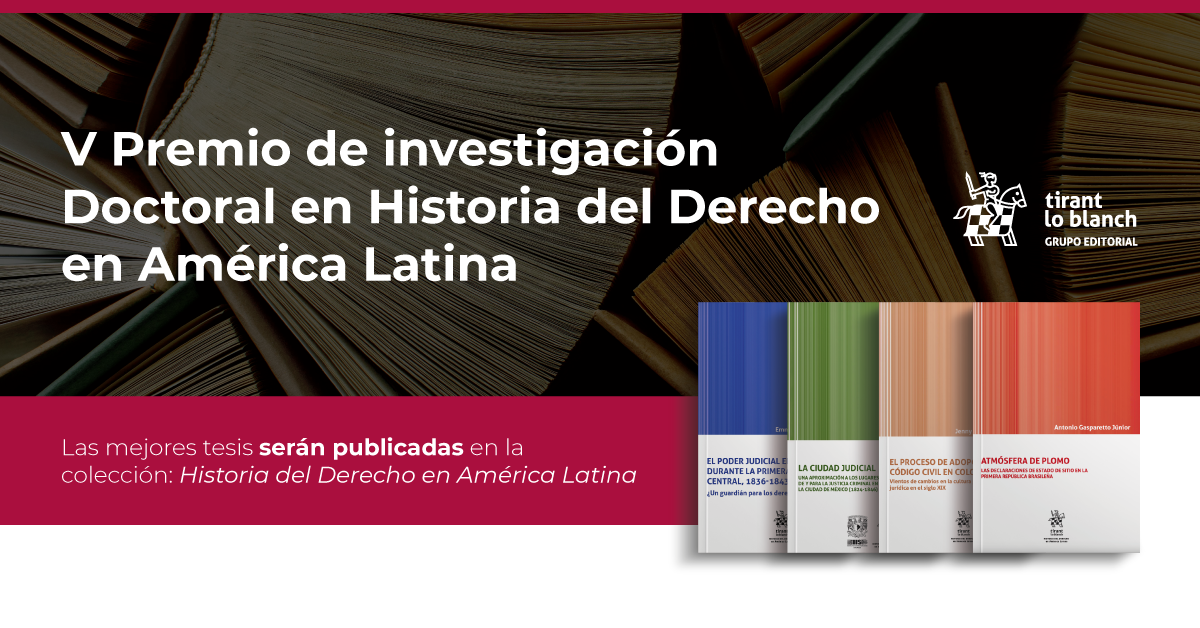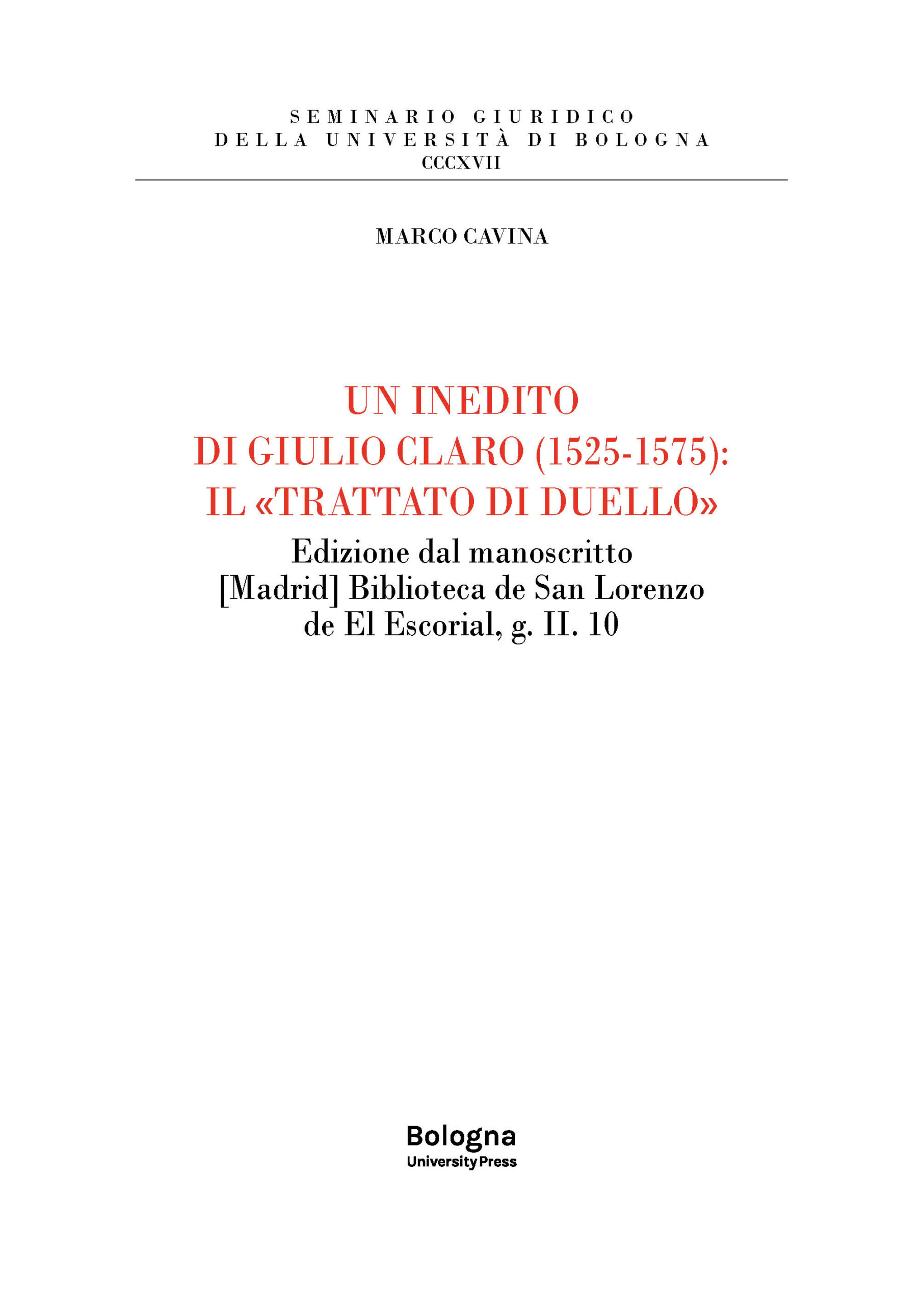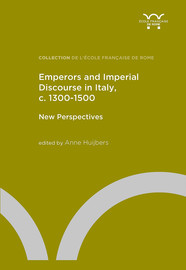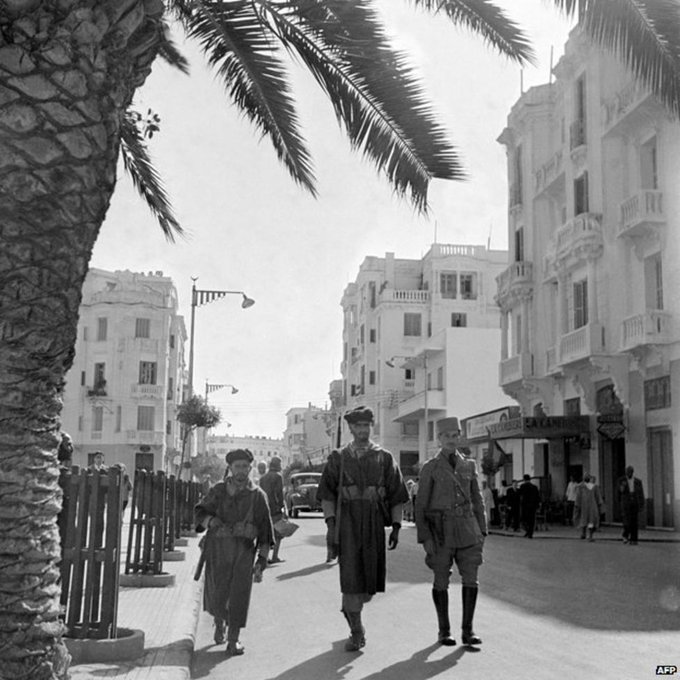(Source: https://univ-droit.fr/societe-savante/10662-societe-internationale-fernand-de-visscher-pour-l-histoire-des-droits-de-l-antiquite)
Chers collègues et amis,
La 76e session de la Société Internationale Fernand De Visscher pour l’Histoire des Droits de l’Antiquité se déroulera à l’Université d’Helsinki, du 22 au 26 août 2023, sur le thème :
Matérialité et immatérialité dans les droits de l’antiquité
J'ai ajouté à cette lettre un appel à contributions séparé en cinq langues. Le site web de la conférence, sur lequel toutes les informations seront mises à jour, est déjà disponible à l'dresse https://www.helsinki.fi/en/conferences/sihda-2023. La date limite de réception des propositions est le 3 mars 2023. J'ai également ajouté quelques informations pratiques
à cette lettre.
Des informations sur les événements sociaux et les excursions, ainsi que sur les voyages et les hôtels, seront incluses dans la deuxième lettre circulaire envoyée en février 2023.
Nous nous réjouissons de vous rencontrer à Helsinki!
Cordialement,
Kaius Tuori
l’Université d’Helsinki
kaius.tuori@helsinki.fi
1st Circular letter
Dear colleagues and friends,
The 76th session of the Société internationale Fernand De Visscher pour l’Histoire des Droits de l’Antiquité shall take place at the University of Helsinki on August 22-26, 2023 with the theme:
Materiality and immateriality of ancient law
I have added to this letter a separate call for papers in five languages. The conference website, where all information will be updated, may already be found at
https://www.helsinki.fi/en/conferences/sihda-2023 The deadline for proposals is March 3, 2023. I have also added some practical information to this letter.
Information on the social events and excursions, as well as travel and hotels, will be included in the second circular letter sent in February 2023.
We are looking forward to meeting you in Helsinki!
Sincerely yours,
Kaius Tuori
University of Helsinki
kaius.tuori@helsinki.fi
Practical information
Deadline for proposals is March 3, 2023.
The conference website may be found at https://www.helsinki.fi/en/conferences/sihda-2023
The submission of proposals should be done through our electronic submission system: https://elomake.helsinki.fi/lomakkeet/121213/lomake.html
The languages of the conference are French, English, German, Italian, Latin, and Spanish.
The registration fee will range from 75 euros for doctoral students to 350 euros for last-minute registrations with all dinners and excursions.
The location of the conference is Porthania, the Faculty of Law of the University of Helsinki, Yliopistonkatu 4.
The information about the social program, excursions and hotel reservations, as well as travel suggestions, will be announced in the second circular letter, in February 2023.
The weather in August is usually mild and not too hot.
Will there be a sauna? Yes, there will be opportunities.
Appel à contributions pour la 76ème session internationale de la SIHDA : Matérialité et immatérialité dans les droits de l’antiquité
SIHDA Helsinki 2023, 22-26.8.2023
https://www.helsinki.fi/en/conferences/sihda-2023
email: sihda2023@helsinki.fi
L’étude des droits de l’antiquité se distingue de presque tous les autres domaines du droit dans la mesure où les sources y afférentes se répartissent nettement entre celles qui sont strictement matérielles, locales et casuistiques, par opposition à celles transmises presque exclusivement par une tradition textuelle, et qui se sont répandues au-delà des frontières nationales au fil du temps jusqu’à atteindre une portée presque universelle. Par exemple, le droit romain est connu à travers des sources documentaires provenant de chaque recoin de l’Empire, à partir d’inscriptions et de manuscrits, de tablettes de cire et de papyrus, qui révèlent le droit de la vie quotidienne et la manière dont le droit était utilisé dans la résolution des conflits. Par ailleurs, la compilation par Justinien et autres manuscrits ont permis au droit romain d’exercer une forte influence dans les cultures juridiques ultérieures, s’étendant bien au-delà des frontières de l’Empire romain, dans des lieux comme le Japon ou le continent américain.
L’objectif de cette session est d’explorer les implications de cette dichotomie. C’est pourquoi nous sollicitons des communications qui exposent comment les fouilles archéologiques et l’étude méticuleuse des sources anciennes ont transformé notre idée du droit de l’antiquité, apportant avec elles des idées telles que la diversité ou le pluralisme juridique, mais également des enquêtes sur la manière dont l’acte même de réception et son impact sur les cultures juridiques modernes a subtilement influencé notre compréhension, en particulier, du droit romain antique.
Les mots-clés sont matérialité et immatérialité, la juxtaposition d’un objet matériel comme une inscription et les notions immatérielles du droit et de la jurisprudence.
Dans le cadre du thème de la conférence, nous sommes particulièrement intéressés par des communications qui abordent :
- le rapport entre tradition documentaire et tradition manuscrite sur les droits de l’antiquité, par exemple des analyses juridiques autour du pluralisme juridique sur les disjonctions et les contradictions entre les deux types de sources;
- de nouvelles découvertes, par ex. les sources épigraphiques ou papyrologiques et leur signification; - le rôle des sources matérielles non littéraires dans la compréhension de la tradition juridique de l’antiquité; - l’application des thèmes de la matérialité juridique dans les droits de l’antiquité;
- l’impact de l’écriture et du matériel d’écriture dans le droit et la pratique juridique;
- l’environnement matériel du droit, comme les espaces de création et de pratique du droit, l’archéologie juridique et la symbolique juridique;
- les manières dont la matérialité était conceptualisée dans le droit antique, le droit des choses, la substantialité et la notion de materia;
- réception de la tradition manuscrite du droit antique et la projection d’idées modernes dans les textes de l’Antiquité.
Comme il est d’usage, ces exemples ne sont en aucun cas restrictifs et nous acceptons des propositions sur un large éventail de sujets, pour autant qu’ils aient un lien avec les droits de l’antiquité. Nous attendons des propositions pour des panels thématiques et des communications individuelles. Comme lors des réunions précédentes, un panel de base comportera trois communications de 20 minutes ainsi qu’un débat postérieur, mais nous acceptons également des panels animés par un ou plusieurs responsables. Nous recherchons aussi des propositions thématiques qui transcendent les limites géographiques ou chronologiques. Nous souhaitons également mettre en place quelques nouveaux types de panels ou formes de présentation structurée d’une durée de 90 minutes. Ils incluent le format de table-ronde (1-2 président(s), 3-4 présentateurs avec des présentations de 10 minutes) mettant l’accent sur la discussion, des propositions de panel d’auteurs-lecteurs sur des livres récents importants (1-2 président(s), 3-4 commentateurs) ainsi que des ateliers de compétences/pédagogie (président, 3-4 animateurs) qui se consacrent à l’étude et/ou l’enseignement des droits de l’Antiquité.
Call for papers: Materiality and immateriality of ancient law
SIHDA Helsinki 2023, 22-26.8.2023
https://www.helsinki.fi/en/conferences/sihda-2023
email: sihda2023@helsinki.fi
The study of ancient law is distinguished from nearly all other fields of law in that its sources are divided sharply between sources that are intensely material, local and casuistic as opposed to sources that are transmitted almost exclusively through a textual tradition and which have spread over national boundaries and over time to have an almost global reach. For example, Roman law is known through documentary sources from all around the ancient world, from inscriptions and manuscripts, wax tablets and papyri, telling of the law of everyday life and how law was used in conflict resolution. On the other hand, the Justinianic compilation and other manuscripts have enabled Roman law to have an immense influence in later legal cultures, spreading far beyond the borders of the Roman Empire, to places like Japan or America.
The aim of this conference is to explore the implications of this dichotomy. We invite papers that study how archeological excavations and the meticulous study of ancient sources have transformed our conception of ancient law, bringing with it ideas such as diversity or legal pluralism, but equally investigations on how the very act of reception and impact on modern legal cultures has subtly influenced our understanding of ancient law. The key words are materiality and immateriality, the juxtaposition of a material object such as an inscription and the immaterial ideas of law and jurisprudence.
Within the theme of the conference, we are especially interested in papers that engage:
- the relationship between documentary and manuscript tradition on ancient law, for instance legal pluralistic analyses on disjunctions and contradictions between the two
- new discoveries in e.g. the epigraphic or papyrological sources and their significance - the role of material, non-literary sources in understanding the ancient legal tradition
- the application of themes of legal materiality in ancient law
- the impact of writing and writing materials in law and legal practice
- the material surroundings of law, such as spaces of creating and practicing law, legal archaeology and legal symbolism
- the ways how materiality was conceptualized in ancient law, the law of things, substantiality and the notion of materia
- reception of the manuscript tradition of ancient law and projections of modern ideas into the ancient materials
As is traditional, these examples are not in any way restrictive and we welcome proposals from a broad range of topics. As always, we welcome proposals that represent the entirety of the ancient world, from ancient Mesopotamia to Late Antiquity. We invite proposals for complete panels and individual papers. As before, a basic panel consists of three papers of 20 minutes and discussion (with a total of 90 minutes), but we also welcome panels with a dedicated commentator or commentators. We encourage thematic proposals that transcend geographic or chronological boundaries.
We are also introducing a few new types of panels or forms of structured presentation for a 90-minute slot. They include the roundtable format (1-2 chairs, 3-4 presenters with 10- minute presentations) with emphasis on discussion, author-meets-readers panel proposals on important recent books (1-2 chairs, 3-4 commentators) as well as skills/pedagogical workshop (chair, 3-4 presenters) that engage in the study and/or teaching of ancient law.
Richiesta di contributi: Materialità ed immaterialità dei diritti dell’Antichità
SIHDA Helsinki 2023, 22-26.8.2023
https://www.helsinki.fi/en/conferences/sihda-2023
email: sihda2023@helsinki.fi
Lo studio dei diritti dell’Antichità si distingue da quello di quasi tutti gli altri campi del sapere giuridico per il fatto che le fonti di tali diritti si dividono in modo netto tra fonti a forte caratterizzazione materiale, locale e casuistica, in opposizione ad altre tràdite quasi esclusivamente attraverso una tradizione manoscritta, la cui diffusione è stata in grado di oltrepassare i confini nazionali e del tempo, sino a raggiungere una portata pressoché globale. Per esempio, il Diritto romano è conosciuto attraverso fonti documentarie provenienti da tutto il mondo antico, che spaziano dalle iscrizioni ai manoscritti, alle tavolette cerate e ai papiri, e sono in grado di raccontare il diritto applicato nella vita di tutti i giorni e di come le regole venissero utilizzate nella risoluzione dei conflitti. D’altro canto, la compilazione giustinianea e altre opere di tradizione manoscritta hanno permesso al Diritto romano di esercitare un’influenza enorme sulle esperienze e le culture giuridiche delle epoche successive, la quale è andata espandendosi ben oltre i confini dell’antico Impero Romano, sino a raggiungere luoghi come il Giappone o l’America.
L’obiettivo di questa conferenza consiste nell’esplorare le implicazioni che la suddetta dicotomia tra le differenti tipologie di fonti comporta. Gli organizzatori invitano, pertanto, coloro che intendano partecipare a presentare ricerche volte ad indagare tanto il modo in cui gli scavi archeologici e lo studio meticoloso delle fonti antiche abbiano contribuito a trasformare le nostre idee sul diritto antico, facendo emergere concezioni quali quelle di diversità e pluralismo giuridico, quanto ed egualmente indagini sul modo in cui la concreta attività di recezione delle fonti e l’impatto da essa avuto sulle culture giuridiche moderne abbia sottilmente influenzato il nostro stesso modo di concepire i diritti antichi.
Le parole chiave sono materialità ed immaterialità, come esse possono essere apprezzate, ad esempio, attraverso la giustapposizione di un oggetto materiale, quale può essere un’iscrizione, e i concetti immateriali di diritto e giurisprudenza.
Nell’ambito del tema generale della conferenza, gli organizzatori sono particolarmente interessati a quelle relazioni che intendano affrontare uno dei seguenti argomenti:
- il rapporto tra tradizione delle fonti documentarie e tradizione manoscritta in relazione ai diritti dell’Antichità, visto ad esempio attraverso analisi in tema di pluralismo giuridico in grado di investigare incongruenze e contraddizioni tra le due tipologie di fonti menzionate
- la scoperta di nuove fonti, ad esempio epigrafiche o papirologiche, ed il loro significato
- il ruolo delle fonti materiali e non letterarie nella comprensione della tradizione giuridica dell’Antichità
- l’impiego di temi concernenti la materialità giuridica nel diritto antico
- l’impatto della scrittura e la rilevanza dei supporti materiali per la scrittura nel diritto e nella pratica legale
- i luoghi materiali del diritto, come, ad esempio, gli spazi dove creare ed esercitare il diritto, l’archeologia giuridica ed il simbolismo giuridico
- i modi in cui la materialità venne concettualizzata nell’Antichità, i diritti reali, la sostanzialità fisica e la nozione di materia
- la recezione della tradizione manoscritta dei diritti antichi e le retroproiezioni di idee e concetti moderni sulle fonti e i materiali del passato
Come da tradizione, gli esempi di tematiche che potranno essere discusse sopra elencati non sono esaustivi, e verranno accolte proposte di relazioni riguardanti il più ampio spettro possibile di argomenti. Come sempre, infatti, gli organizzatori saranno lieti di ricevere proposte per interventi in grado di rappresentare il mondo antico nella sua complessità ed interezza, dalla realtà dell’antica Mesopotamia e sino alla tarda Antichità. Gli organizzatori invitano i potenziali partecipanti a presentare proposte tanto per più interventi strutturati tenuti da un gruppo di relatori, quanto per relazioni singole ed individuali. Seguendo una regola consolidata, nel caso di più interventi strutturati tenuti da un gruppo di relatori su di un dato tema (basic panel) sono previste tre relazioni di 20 minuti ciascuna alle quali poi fa seguito la discussione (per una durata, nel complesso, di 90 minuti), ma gli organizzatori incoraggiano anche serie di interventi tenute da un gruppo di relatori che prevedano poi un confronto con uno o più commentatori appositamente scelti e nominati. Gli organizzatori, altresì, incoraggiano proposte tematiche in grado di trascendere i confini geografici e temporali.
Si è infine deciso di introdurre alcune nuove tipologie di presentazioni di gruppo o comunque strutturare della durata di 90 minuti. Esse includono il formato della tavola rotonda (con 1 o 2 presidenze e 3 o 4 relatori, i quali potranno tenere un intervento di 10 minuti ciascuno), durante la quale dovrà essere dato risalto al momento della discussione, proposte di incontri autori-lettori dedicate a libri di particolare importanza e di recente pubblicazione (1 o 2 presidenze e 3 o 4 commentatori), nonché, da ultimo, seminari di tipo didattico/pedagogico concentrati sulle competenze per lo studio e/o l’insegnamento dei diritti dell’Antichità.
Aufruf für Beiträge: Materialität und Immaterialität des antiken Rechts
SIHDA Helsinki 2023, 22-26.8.2023
https://www.helsinki.fi/en/conferences/sihda-2023
email: sihda2023@helsinki.fi
Die Erforschung des antiken Rechtes unterscheidet sich von fast allen anderen Rechtsgebieten dadurch, dass seine Quellen deutlich in materielle, lokale und kasuistische Quellen unterteilt sind, im Gegensatz zu Quellen, die fast ausschließlich durch eine Texttradition überliefert sind und sich über nationale Grenzen hinweg und im Laufe der Zeit zu einer fast globalen Reichweite verbreitet haben. Das römische Recht beispielsweise ist durch dokumentarische Quellen aus der ganzen antiken Welt bekannt, durch Inschriften und Manuskripte, Wachstafeln und Papyri, die vom Recht des täglichen Lebens und der Anwendung des Rechts bei der Konfliktlösung erzählen. Andererseits haben die justinianische Sammlung und andere Handschriften dem römischen Recht einen immensen Einfluss auf spätere Rechtskulturen verschafft, der weit über die Grenzen des Römischen Reiches hinausging, etwa nach Japan oder Amerika.
Ziel dieser Konferenz ist es, die Auswirkungen dieser Dichotomie zu untersuchen. Wir freuen uns über Beiträge, die untersuchen, wie archäologische Ausgrabungen und das akribische Studium antiker Quellen unsere Vorstellung vom antiken Recht verändert haben, indem sie Ideen wie Diversität oder Rechtspluralismus mit sich brachten, aber auch Untersuchungen darüber, wie der Akt der Rezeption und der Einfluss auf moderne Rechtskulturen unserVerständnis des antiken Rechts subtil beeinflusst hat.
Die Schlüsselwörter sind Materialität und Immaterialität, die Gegenüberstellung eines materiellen Gegenstands wie einer Inschrift und der immateriellen Ideen von Recht und Rechtsprechung.
Im Rahmen der Thematik der Konferenz sind wir besonders an Beiträgen interessiert, die sich mit folgenden Themen beschäftigen:
- das Verhältnis von urkundlicher und handschriftlicher Überlieferung des antiken Recht, z.B. rechtspluralistische Analysen zu Disjunktionen und Widersprüchen zwischen diesen Überlieferungsformen
- neue Entdeckungen z.B. in den epigraphischen oder papyrologischen Quellen und deren Bedeutung
- die Rolle der materiellen, nicht-literarischen Quellen für das Verständnis der antiken Rechtstradition
- die Anwendung von Themen der juristischen Materialität im antiken Recht
- der Einfluss von Schrift und Schriftgut im Recht und in der Rechtspraxis
- das materielle Umfeld des Rechts, wie z. B. Räume der Rechtsschöpfung und -ausübung, Rechtsarchäologie und Rechtssymbolik
- die Art und Weise, wie Materialität im antiken Recht konzeptualisiert wurde, das Recht der Dinge, Substantialität und der Begriff der materia
- die Rezeption der handschriftlichen Überlieferung des antiken Rechts und die Projektion 11 moderner Vorstellungen in die antiken Materialien.
Wie üblich sind diese Beispiele in keiner Weise einschränkend, und wir begrüßen Vorschläge aus einem breiten Themenspektrum. Wie immer begrüßen wir Vorschläge, die die gesamte antike Welt abdecken, vom alten Mesopotamien bis zur Spätantike. Wir laden zu Vorschlägen für komplette Panels und Einzelbeiträge ein. Wie bisher besteht ein normales Panel aus drei 20-minütigen Vorträgen und einer Diskussion (mit einer Gesamtdauer von 90 Minuten), aber wir begrüßen auch Panels mit einem oder mehreren engagierten Kommentator*innen. Wir ermutigen zu thematischen Vorschlägen, die über geografische oder zeitliche Grenzen hinausgehen.
Wir führen zudem einige neuartige, neunzigminütige Panels oder strukturierte Präsentationen ein. Dazu gehören das Roundtable-Format (1-2 Vorsitzende, 3-4 Referenten mit 10-minütigen Präsentationen), das den Schwerpunkt auf die Diskussion legt, Autor- trifft-Leser-Panelvorschläge zu bedeutenden neueren Büchern (1-2 Vorsitzende, 3-4 Kommentatoren) sowie Kompetenz-/Pädagogik-Workshops (Vorsitzender, 3-4 Referenten), die sich mit dem Studium und/oder der Lehre des antiken Rechts befassen.
Candidatura abierta para la presentación de contribuciones: Materialidad e inmaterialidad del derecho antiguo
SIHDA Helsinki 2023, 22-26.8.2023
https://www.helsinki.fi/en/conferences/sihda-2023
email: sihda2023@helsinki.fi
El estudio del derecho antiguo se distingue de casi todos los demás campos del derecho en que sus fuentes se dividen claramente entre intensamente materiales, locales y casuísticas frente a aquellas que se transmiten casi exclusivamente a través de una tradición textual, y se han extendido más allá de los límites del territorio nacional y a través del tiempo, hasta lograr un alcance casi global. Por ejemplo, el derecho romano es conocido a través de fuentes documentales de todo el mundo antiguo, desde inscripciones y manuscritos, tablillas de cera y papiros, que hablan del derecho de la vida cotidiana y de cómo se usaba la ley en la resolución de conflictos. Por otro lado, la compilación de Justiniano y otros manuscritos han permitido que el derecho romano tenga una inmensa influencia en las culturas legales posteriores, extendiéndose mucho más allá de las fronteras del Imperio Romano, a lugares como Japón o América.
El objetivo de esta conferencia es explorar las implicaciones de esta dicotomía. La invitación se extiende a trabajos que estudien cómo las excavaciones arqueológicas y el estudio meticuloso de fuentes antiguas han transformado nuestra idea de derecho antiguo, trayendo consigo ideas como diversidad o pluralismo jurídico, pero igualmente, investigaciones acerca de cómo el propio acto de recepción e impacto en las culturas jurídicas modernas ha influido sutilmente en nuestra comprensión del derecho romano antiguo.
Las palabras clave son materialidad e inmaterialidad, en cuanto a la yuxtaposición de un objeto material como una inscripción y las ideas inmateriales del derecho y la jurisprudencia.
Dentro del tema de la conferencia, estamos especialmente interesados en trabajos que incluyan o se centren en:
- la relación entre la tradición documental y manuscrita en el derecho antiguo, por ejemplo, análisis centrados en la óptica del pluralismo jurídico sobre disyunciones y contradicciones entre ambos tipos de fuentes.
- nuevos descubrimientos, p.ej. fuentes epigráficas o papirológicas y su significado
- el papel de las fuentes materiales no literarias en la comprensión de la antigua tradición jurídica
- la aplicación de temas relacionados con la materialidad que afecta el derecho antiguo
- el impacto de la escritura y los materiales de escritura en el derecho y la práctica jurídica
- el entorno material del derecho, como los espacios de creación y práctica del derecho, la arqueología y los símbolos legales
- las formas en que la materialidad fue conceptualizada en el derecho antiguo, la ley de las cosas, la sustancialidad y la noción de materia
- recepción de la tradición manuscrita de la ley antigua y proyecciones de ideas modernas en los materiales antiguos
Como es tradicional, estos ejemplos no son de ninguna manera restrictivos y damos la bienvenida a propuestas de una amplia gama de temas. Invitamos propuestas para paneles completos y trabajos individuales. Como antes, un panel básico consiste en tres ponencias de 20 minutos y discusión, pero también aceptamos paneles con un comentarista o comentaristas dedicados. Animamos especialmente la presentación de propuestas temáticas que trasciendan fronteras geográficas o cronológicas.
Con ocasión del evento, estamos introduciendo algunos nuevos tipos de paneles o formas de presentaciones estructuradas en espacios de 90 minutos. Incluyen el formato de mesa redonda (1-2 presidentes, 3-4 presentadores con presentaciones de 10 minutos) con énfasis en la discusión, propuestas de paneles de autor y lectores sobre libros recientes importantes (1-2 presidentes, 3-4 comentaristas) así como como taller de técnicas/pedagógico (presidente, 3-4 presentadores) que se dedican al estudio y/o enseñanza del derecho antiguo.






2022_.jpg)














